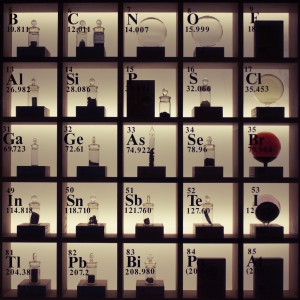Yesterday Senator Frank R. Lautenberg announced the “Safe Chemicals Act of 2011″. This is incredibly exciting, important, and I am going to start by giving you a bit of history and context of why…
Last year a groundbreaking piece of legislation was introduced to modernize the “Toxic Substances Control Act of 1976” which was originally enacted to protect Americans from exposure to harmful toxic chemicals. It was no longer doing that. There has been a huge change in both chemical production and our knowledge about the harm some chemicals can cause.
Tens of thousands of chemicals have so far been allowed on the market with little to no testing for safety. As of today, the EPA has been able to require testing for just 200 of the more than 80,000 chemicals that are currently registered in the United States.
 photo credit: pastaboy on flickr
photo credit: pastaboy on flickr
These are chemicals that are being used in products you and your family might use every day. Are all the chemicals a human health hazard? Of course not. But we do need to know that the shampoo we are using on our babies, the lotions we are slathering on our skin, and the countless chemicals we are surrounded by day in and day out are not going to cause adverse health effects in the short or long-term.
The average American has more than 200 industrial chemicals in their body. Dozens of these are known to cause cancer and other health problems: asthma, genital defects in baby boys (like hypospadias), infertility, ADHD, type 2 diabetes, heart disease, endocrine disruption, female reproductive diseases (like endometriosis), earlier puberty, declines in male birth rates, and more.
What are these chemicals? A project from the Environmental Working Group found industrial waste byproducts (dioxins), consumer product ingredients (flame retardants, Teflon chemicals), and industrial chemicals and pesticides that have been banned for decades before the blood samples were taken.
Disturbingly, EWG’s project focused on 10 Americans that we know were not exposed to these chemicals through the air they breathe, the water they drank, or the food they ate. They were not exposed in the workplace at a factory or farm. All of the blood samples were taken from these 10 Americans’ umbilical cord blood. Their exposure to more than 200 chemicals, many of them toxic, were all in utero.
If you read this blog regularly, you will know how passionate I am about the health of our children and their world. I am also aware that sometimes increased regulations and legislation has its faults. That is why I am thrilled that Sen. Lautenberg took the time to ask for feedback to improve upon last year’s legislation. There were some major improvements and now it is ready to make some real positive changes!
The “Safe Chemicals Act of 2011”:
Provides EPA with sufficient information to judge a chemical’s safety. Requires manufacturers to develop and submit a minimum data set for each chemical they produce, while also preventing duplicative or unnecessary testing and encouraging the use of rapid, low-cost, non-animal tests that provide high quality data. EPA will have full authority to request additional information needed to determine the safety of a chemical.
Prioritizes chemicals based on risk. Calls on the EPA to categorize chemicals based on risk, and focus resources on evaluating those most likely to cause harm.
Takes fast action to address highest risk chemicals. Requires EPA to take fast action to reduce risk from chemicals that have already been proven dangerous. In addition, the EPA Administrator is given authority to act quickly if any chemical poses an imminent hazard.
Ensures safety threshold is met for all chemicals on the market. Places the burden of proof on chemical manufacturers to prove the safety of their chemicals. All uses must be identified and determined safe for the chemical to enter the market or continue to be used.
Creates open access to reliable chemical information. Establishes a public database to catalog the chemical information submitted to the EPA by manufacturers, as well as the safety determinations made by the EPA. The EPA will impose requirements to ensure the information collected is reliable.
Promotes innovation and development of green chemistry. Establishes grant programs and research centers to foster the development of safe chemical alternatives, and brings some new chemicals onto the market using an expedited review process.
Inform yourself.
Share that information with others.
Contact your U.S. Senator and let them know that you support the “Safe Chemicals Act of 2011” and chemical safety reform.
We all deserve to know that the chemicals on the market are safe.
Update: Safer Chemicals, Healthy Families has made it really simple to ask your Senators to be superheroes by co-sponsoring the Safe Chemicals Act! Just go their action page and enter your zip code. They also have some great tips for writing a personal letter, or making a phone call, to your Senator


Pingback: 'Sound the Alarm' about toxic chemicals |